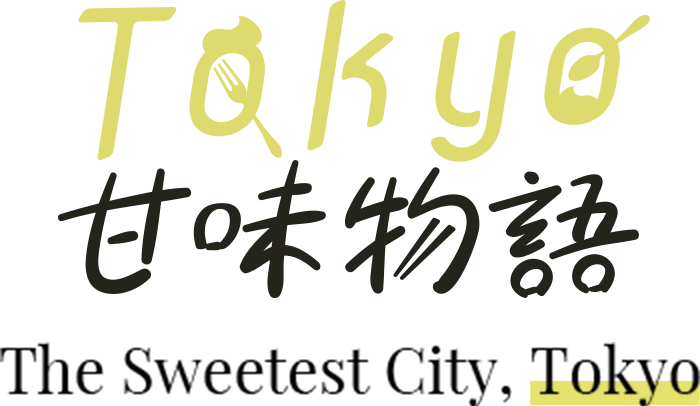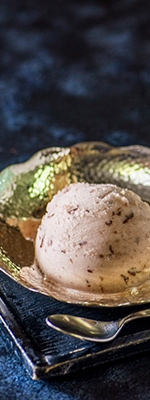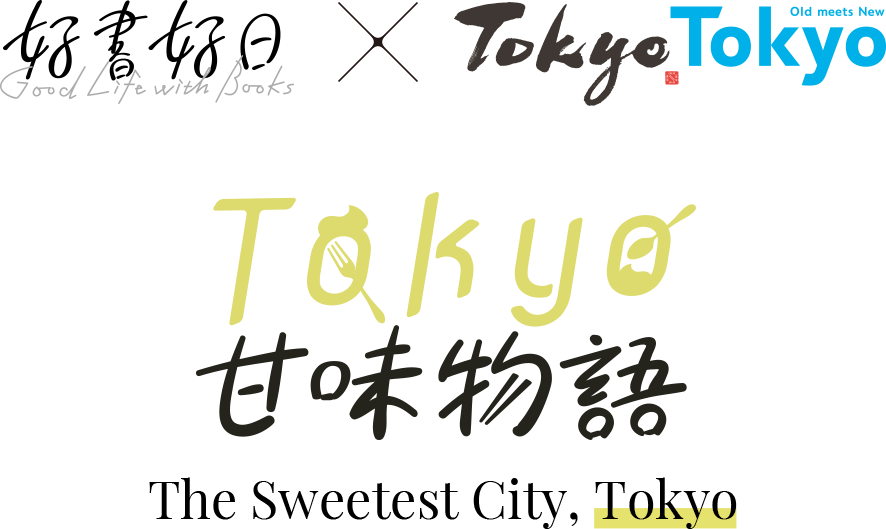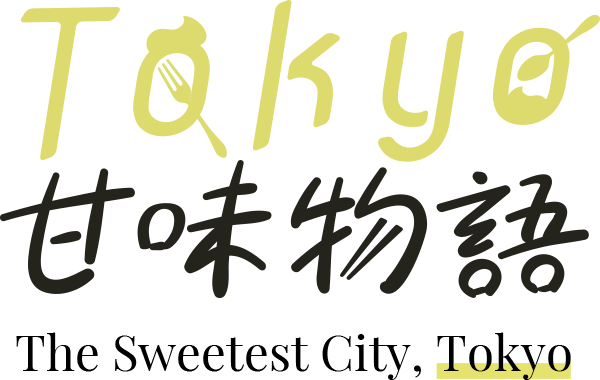
the basis of Japanese Sweets!
sweet azuki bean paste,
the basis of Japanese Sweets!
[Writer and scholar of Japanese literature]
Hiromi Kawata
[Freelance announcer]
“Anko” sweet azuki bean paste is an essential ingredient of Japanese confections such as “Daifuku,” a soft round rice cake stuffed with sweet azuki bean paste, “Yokan,” sweet jellied azuki bean paste and “Odango,” sweet azuki bean paste dumplings. While it is a simple ingredient made with azuki beans, sugar and salt, elements such as how the astringency of the beans is removed and the amount of water used make a difference to the end result, so that one hundred cooks would produce one hundred different types of Anko. We asked Nozomu Hayashi, a writer who has a great love of Anko, and Hiromi Kawata, a freelance announcer, about their passion for Anko.
[Coverage and composition: Kanako Nezu]
“The light purplish color is the color of Tokyo Anko.”
Nozomu Hayashi, who came up with idea of “Ankomapan,” an Anko and mayonnaise sandwich (his favorite), in his student days, the recipe for which was used as the lyrics in a song, has been a great fan of “Koshian,” smooth sweet azuki bean paste, from childhood. Here, he talks about the appeal of Koshian at “Kinozen,” a Japanese confectionary shop in Kagurazaka of which he has long been patron.
[Photography: Takuyuki Saito, d’Arc : models and factory :]
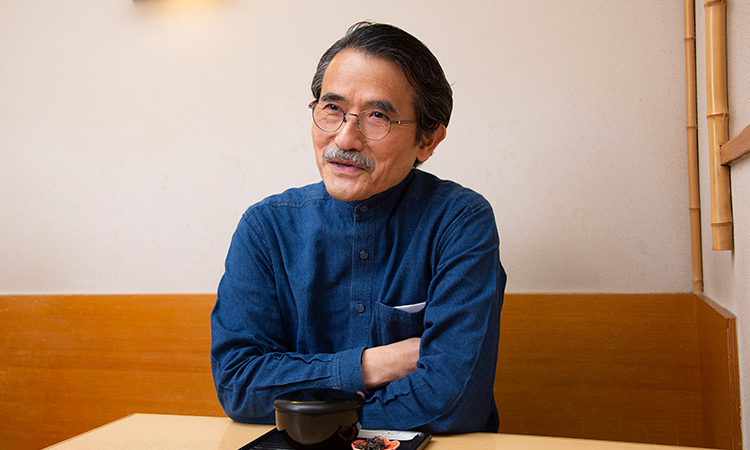
Writer and scholar of Japanese literature
——Have you liked “Koshian” since you were child?
Yes, I have. When asked, “Which would you like, Koshian (smooth sweet azuki bean paste) or Tsubuan (coarse sweet azuki bean paste),” I would choose Koshian without hesitation. I think it’s not just me, but many people in Tokyo prefer Koshian. It seems to me that Tsubuan is more popular in Kansai.
——I know you are well known for the song “Ankomapan,” with the recipe for a cold Anko and mayonnaise sandwich as the lyrics, but could you tell us the story of how you came up with the idea for the recipe?
Well, it’s not really a story, but I invented the recipe when I was staying at a holiday home in Shinshu. That was almost fifty years ago. At the time, when I felt like eating something sweet, I used to go to a long-established Japanese confectionary shop called “Obinata” in Shinano Omachi in Nagano Prefecture to buy some Anko made there and then melted it to make sweet red bean soup, or spread it on bread instead of jam.
At some point, I recalled a friend who had transferred from his school in Kansai during my student days. He used to like sandwiches containing sweet omelets and mayonnaise. My first reaction was one of disbelief, but I found it really was delicious when I tried it. Sweet omelets and mayonnaise do go well together. When I remembered this, I was sure that Anko would go well with mayonnaise too. Even now, I still sometimes make Ankomapan sandwiches.
——“Kinozen,” the shop we are visiting today, is a long-established confectioner with a shop in Kagurazaka from the end of the Edo period, but could you tell us how you discovered “Awazenzai,” a sweet azuki bean paste with millet?
Well, a student I used to teach at Toyoko Gakuen Women’s College told me about it. She asked me if I had ever had Kinozen’s Awazenzai, and recommended that I try it, so I went along to the shop and found it to be really delicious. Although not available during the cherry blossom season, the shop sells this Awazenzai only from autumn through winter, so, it’s ideal for cold seasons like this.

——Please go ahead while it’s still warm.
Thank you (so saying, Mr. Hayashi removed the lid from the bowl.). Doesn’t it look wonderful! The yellow is the millet and the purplish color is the Anko. The color of this Anko is unique. In olden days, although it’s no longer in business, there used to be a shop called “Fujimura” in Hongo in Bunkyo ward that was famous for its Yokan, and the Anko there was the same color as this. In Kyoto, they make Zenzai with Tsubuan, but I prefer Koshian.
This sweetness is just right too. I don’t like Anko that’s too sweet. When I prepare Anko myself, I don’t make it too sweet. They use good quality beans to make this Anko, so the taste is especially good. Some shops use imported beans, but the aroma is different, and the taste is not the same at all. You can tell from just one mouthful.
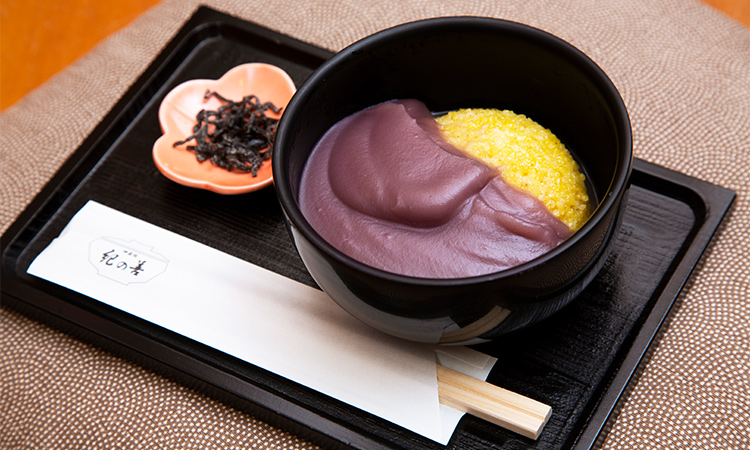
——It’s still steaming and looks hot. Do you eat this Awazenzai with chopsticks rather than a spoon?
The Awameshi, or boiled millet, and bean paste have a firm consistency, so you can eat the Zenzai with chopsticks. The hotness is part of delicious taste too. The Awameshi in the Zenzai served here is on the hot side and the Anko cooler, and this brings out the hotness of the Awameshi in your mouth. It has plenty of calories, so this one bowlful is enough to fill you. Ah, look, I’ve finished already.
——You finished that off in no time!
Normally, when I eat something sweet, at some point, I also want to eat something salty, like the salted kelp strips that come with sweet dishes, but I don’t feel that with the Zenzai served here. I finish it all in one go. Because the Awameshi is not sweet, it combines perfectly with the Koshian. The taste hasn’t changed a bit from the first time I tried it. I think the shop’s décor has become a little smarter, but this taste – well, it hasn’t changed at all. You can also order Zenzai to go, but you don’t get the freshly made taste unless you eat in the shop. Also, you probably only get the chance to enjoy Awameshi in a place like this. This Awameshi really is delicious. You really should try it (laughter).
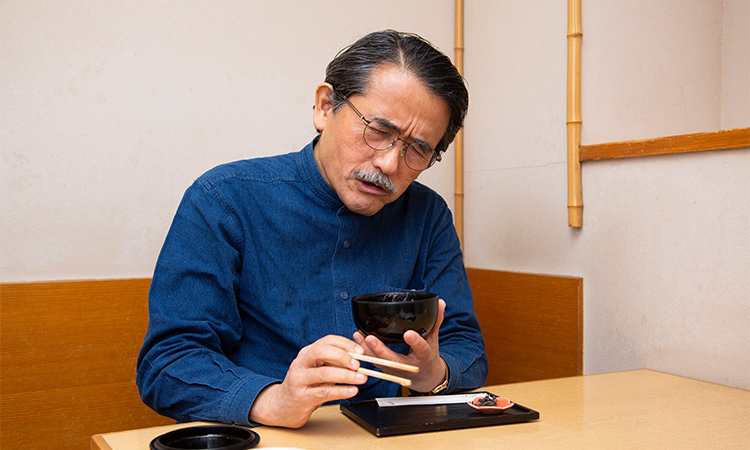
——How would you classify Anko as a food?
Well, I can’t drink anything alcoholic, but I love Anko – you could even say “I live for Anko!” Japanese confections are made of Anko. There have been times when I’ve been in poor health, and at times like that, I didn’t eat any Western confections at all because of their high calory content, but the main ingredient of Anko is beans. Because it contains mainly proteins and carbohydrates and almost no fat, Anko is very healthy, so you can eat it with peace of mind. I’m always surrounded by Anko confections.
Talking about Anko, I think Manju, or buns with an Anko filling, are very important too. With sweets like Yokan or Nerikiri, kneaded confections, you are eating almost nothing but Anko, but I think that Manju, with a wrapping made of kneaded wheat flour, probably made Anko more popular. Actually, since I am a “Manju researcher,” I travel around the country to give lectures and I always eat Manju wherever I go. Manju are usually available in any town.
Also, expertise in making delicious Anko has probably been handed down throughout its history and good Anko like this can surely not be made overnight. Taking sweetness as an example, I believe that craftsmen have learned through experience just the right degree of sweetness to make Anko easy to eat without tiring of the taste, so that Anko has become aa product realized through a condensation of amassed know how on how to make a good product. While Tsubuan can be made simply by boiling the beans, to make Koshian, the beans have to be boiled and strained and then boiled down from a loose consistency. The process of making Koshian is time consuming and very troublesome. I believe that going to such lengths also adds the delicious taste of Koshian.
Nozomu Hayashi / Writer and scholar of Japanese literature. Born in Tokyo in 1949, Mr. Hayashi made his debut as a writer in 1991 with his Japan Essayist Club Award-winning book “Delicious England” (Published by Bunshun Bunko, Heibonsha). As well as his many works, including “Prof. Rymbow’s Bedside Book of Humor,” and all ten volumes of “Translation of The Tale of Genji” (Both published by Shodensha), Mr. Hayashi has also ventured into undertakings such as writing lyrics for the song “Ankomapan” (music composed by Yasuhide Ito) and choral works. Mr. Hayashi also goes under the alias of “Prof. Rymbow.”
[Official HP]
https://www.rymbow.com/
[Location] Kinozen Building, 1-12 Kagurazaka, Shinjuku-ku, Tokyo
[Access] West Exit, Iidabashi Station, JR Sobu Line
B3 Exit, Iidabashi Station, Yurakucho and Namboku lines, Tokyo Metro
[TEL] 03-3269-2920
[Hours / fixed holidays]
Tuesday – Saturday: 11:00 – 20:00 (last order: 19:30)
Sundays and holidays: 11:30 – 18:00 (last order: 17:00)
Closed on Mondays
[Official site]
http://www.kinozen.co.jp/
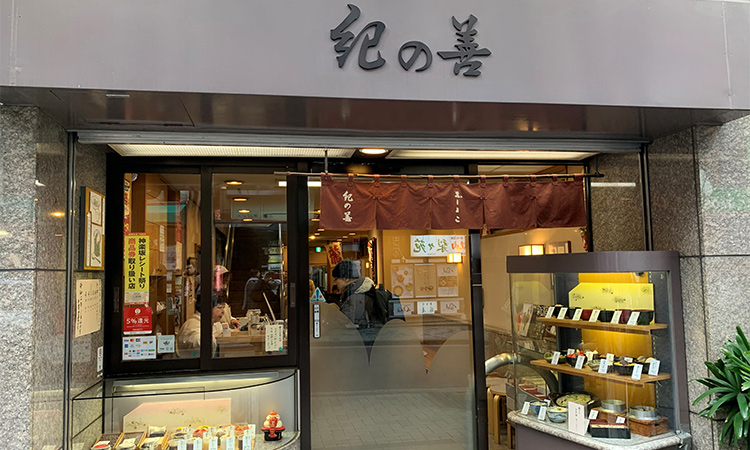
“In search of Anko unknown in the world at large!”
Ms. Kawata became known overnight for her “love of Anko” from the episode where she related that there were always cans of boiled azuki beans in her house during her childhood, so spoon could be prepared from the can to eat right away. Here, she talks on subjects such as her “Anko pilgrimage” in Tokyo and standard Anko items such as “Ningyoyaki,” doll-shaped sponge cake filled with sweet azuki bean paste, and “Ankodama,” sweet azuki bean paste balls.
[Photography: Ren Arimura, d’Arc : models and factory :]
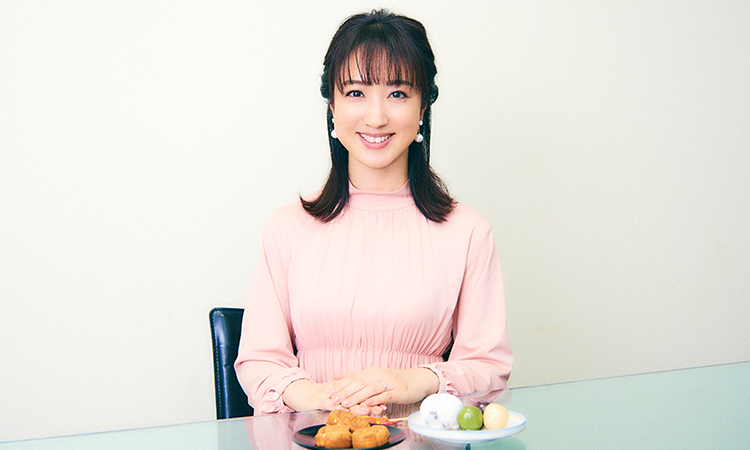
Freelance announcer
——You say that, from your early childhood, there were always confections on hand at home, such as Anko made by your grandmother topped with rice-flour dumplings and frozen Kaitenyaki (Imagawayaki), round-shaped waffles filled with Anko that your mother used to make. After becoming a freelance announcer and coming to Tokyo, you have enjoyed “Anko pilgrimages” in Tokyo, haven’t you?
When I came to Tokyo, I was excited at the prospect of being able to try all kinds of Anko to my heart’s content. I couldn’t wait to visit famous shops in Tokyo that I had heard of. Right away, I visited places such as the three best-known Daifuku shops and three shops renowned for their “Taiyaki (Fish-shaped pancake filled with sweet bean paste),” and spent my days off going around shop after shop. Although people wondered how I could eat so much in one day, I never felt that the confectionary was too sweet to eat.
——How did you research the shops you wanted to visit?
For example, I checked on the Internet, read articles in magazines and watched TV programs on Japanese confectionary and special features on gifts that I really enjoy. Especially, “Matsushimaya,” (Sengakuji, Minato ward), which is one of the three best-known Daifuku shops, was a place I wanted to go to right away. While I was in Kansai, I had eaten Daifuku on a TV program and the delicious taste impressed me so much that I felt that I really wanted to try the freshly made product. When I actually visited the shop and tried their Daifuku, the delicious taste was even better than I had imagined. The shop had a retro style and the elegance of a long-established shop. The showcase too seemed just as it had ages ago and the proprietor who served me was kind and polite, creating an atmosphere that put me at ease.
——Do you remember any particular impressions of Anko in Tokyo after coming here?
First of all, I got the impression that there were a lot of Japanese confectionary shops. Although there are a lot of shops in places like Kyoto in Kansai too, I imagine that the reason why there are so many shops in Tokyo is probably because ordinary people too started eating confectionary like Anko when the capital was in Edo rather than when it was in Kyoto.
——There are all kinds of well-known Anko confections in Tokyo unique to specific areas such as “Kusadango,” mugwort-flavored rice dumplings, in Shibamata, Katsushika ward, or “Ogura Ice,” ice cream mixed with sweet azuki bean paste, in Yushima, Bunkyo ward, aren’t there?
Yes. I felt that was different to Kansai. There are old shops that have been in business for about one hundred years where Anko-based sweets are made incorporating new ingredients at the same time as maintaining traditions down through the ages, and this gave me the impression of the wide range of uses of Anko.

——Today, we have prepared “Ankodama,” “Mame Daifuku” (a soft round beans-mixed rice cake stuffed with sweet azuki bean paste) and “Ningyoyaki.” You’ve actually tried all these before, haven’t you?
Funawa’s “Ankodama” look cute come in all kinds of colors, and there are seasonal items such as “Sakura-an,” cherry-blossom colored Anko, so I enjoy deciding which to choose. While these are confections that are pure Anko, I feel that the sweetness is just right. While only one is enough to satisfy, the sweetness makes you want to eat more, so I think they appeal to people of all ages. The standard azuki bean type is good too, but I love Shiroan, white Anko made from navy beans. While Shiroan seems somewhat lowkey, it highlights the other ingredients it’s served with, such as strawberry Daifuku.
I have enjoyed Daifuku from a long time ago but started eating Mame Daifuku after I came to Tokyo. Of course, they have Mame Daifuku in Kansai too, but I have the impression that “Ankoromochi,” bean-paste rice dumplings, or “Shio Daifuku,” rice cake stuffed with salt-seasoned bean paste, are the more common types. I think that Mame Daifuku in Tokyo has a more distinctive red-pea flavor. The difference is slight, but the saltiness of the beans brings out the sweetness and I really like the balance between the two.
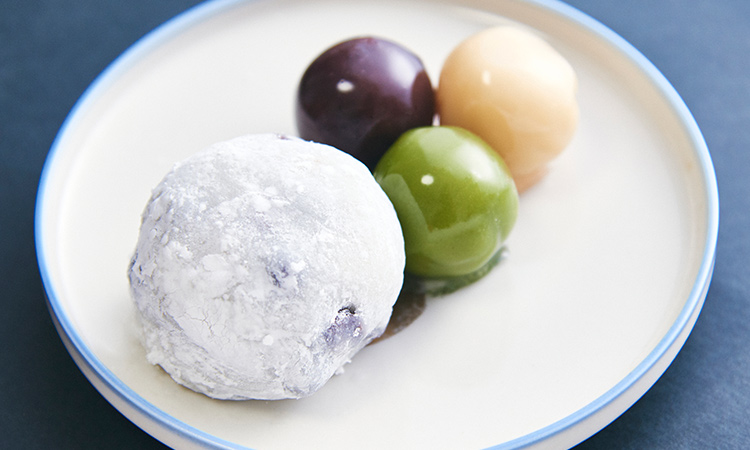
(Right) “Funawa,” Ankodama [From 777 yen for nine.] Available at the main shop in Asakusa, Tokyo, shops in department stores, JR Tokyo and Ueno station buildings and the online shop.
The word “Ningyoyaki” brings images of Tokyo to my mind. The first thing that comes to mind is Tokyo confectionary that also makes an ideal gift. I’ve enjoyed Ningyoyaki since when I lived in Kansai, but after trying it after coming to Tokyo, I feel that Ningyoyaki in Tokyo and Kansai each has unique features. The shape differs, of course, but the taste is also different depending on the amount of Anko inside and the way the confectionary is baked, for example. While Ningyoyaki is delicious even cold, it’s also nice to go to a shop and eat freshly made Ningyoyaki. I also like Ningyoyaki that is so hot it almost burns my tongue with thick Anko oozing from the edges.

——There are people who prefer “Tsubuan” and those who are fans of “Koshian.” I get the impression that you’re a fan of both, am I right?
Yes, I like both, and I can’t choose one over the other, just as I couldn’t make a choice if someone were to ask me, “Who do you love more: your mother of your father?” They both have attractive qualities, but I also like types such as “Tsubushian,” with a consistency that lies between coarse Tsubuan and smooth Koshian, and Uguisuan, made from green peas, and I can’t really rank them in terms of preference. What I like about Tsubuan is the feeling that I’m eating azuki beans. The skin of the beans mixes with the paste in your mouth so that the flavor of the beans comes out more and more as you chew. Koshian is smooth and has a nice texture on the tongue and goes well with all kinds of things like mochi rice cake or dumplings.

——Is there any kind of Anko you’d like to find in Tokyo in the future?
Well, all I can do is explore as I walk around the city. I have had experiences of going into shops that I come across as I am walking about where I’ve found some really delicious items, so I want to extend the range of my walks and discover Anko shops that only local people know that haven’t yet been featured on TV shows or in magazines.
Hiromi Kawata / Freelance announcer born in Osaka in 1983. Ms. Kawata turned freelance in 2015 after working as an announcer for Yomiuri Telecasting Corporation and has appeared in such programs as “Isshu-mawatte Shiranai-hanashi” (Nippon Television Network Corporation), “Konosatte Nandesuka” and “Pittanko Kankan” (Tokyo Broadcasting System Television, Inc.) and “Peach CAFÉ” (Yomiuri Telecasting Corporation). As well as “Anko To Watashi” (Pia), “Tokyo Anko Meguri” (KADOKAWA), a compilation of “Hiromi Kawata’s Anko Pilgrimage through Tokyo” series in Walker Plus is scheduled to do on sale on February 25.
[Official site]
https://www.centforce.com/profile/t_profile/kawatahiromi.html
[Official blog]
https://ameblo.jp/kawata--hiromi/
[Official Twitter]
@hiromikawata
[Location] 6-2 Ginza, Chuo-ku, Tokyo
[Access] A walk of 5 minutes from the C1 Exit of Ginza Station, Tokyo Metro
[TEL] 03-3573-2225
[Hours / fixed holidays]
10:00 – 21:00 (10:00 – 19:00 on Sundays and holidays)
[Official site]
http://www.kanra.co.jp/
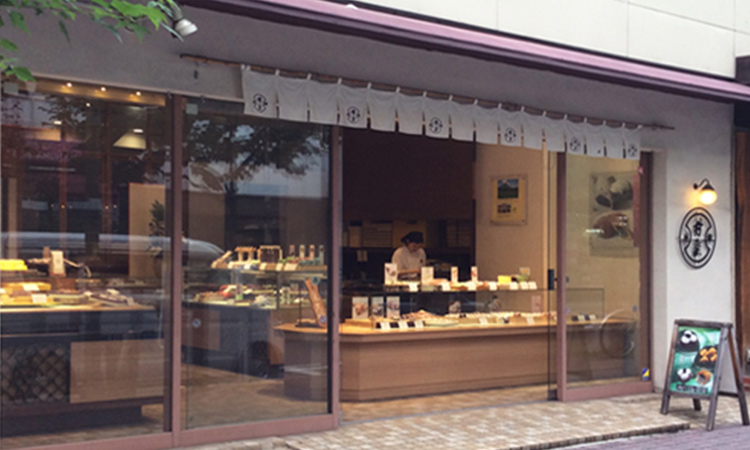
[Location] 1-22-10 Asakusa, Taito-ku, Tokyo
[Access]
1F, on the corner of Shin-Nakamise Street and Orange St., near Asakusa Station, Tokyo Metro
[TEL] 03-3842-2781
[Hours / fixed holidays]
Weekdays: 10:00 – 19:00
Saturdays: 9:30 – 20:00
Sundays and holidays: 9:30 – 19:30
[Official site]
http://funawa.jp/
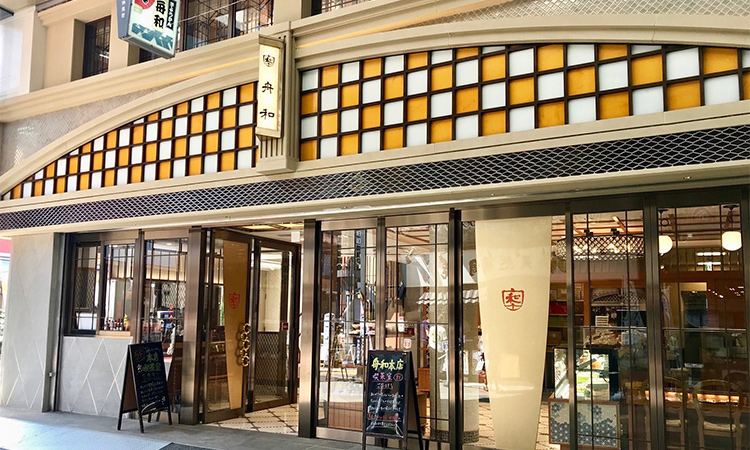
[Location] 2-4-2, Ningyo-cho, Chuo Ward, Tokyo
[Access] Right near the A1 Exit of Ningyo-cho Station, Tokyo Metro
[TEL] 03-3667-4818
[Hours / fixed holidays]
Open from 9:00 until stock runs out. No fixed holidays.
[Official site]
http://www.itakuraya.com/



